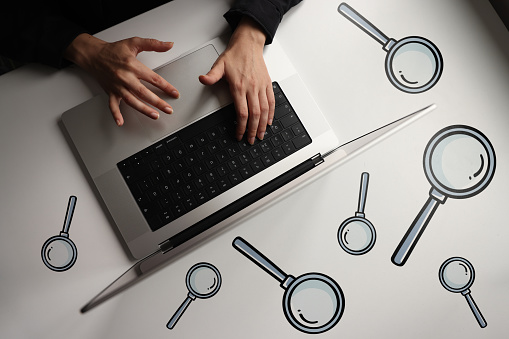What Is SEO Crawling and Indexing?
There are a lot of basic Google Search Engine terms we need to familiarize ourselves with to understand SEO. You've likely heard the words crawl and index if you've been in the web world for any length of time:
Google Crawling and Indexing
Let's define, understand, and learn more about crawling and indexing, the two terms that are essential to the entire web world.
Crawling:
This process is performed by Google's spider crawler when it visits your website for tracking purposes.
Indexing:
Google indexes the results after crawling (i.e. web search) has taken place.
What is Google Crawling?
In essence, crawling entails following a path. The term "crawling" refers to a search engine following your links and "crawling" your website for content. Whenever a bot visits your site (any page), it follows the links to other pages as well.
Creating sitemaps allows Google's bots to find all of the links on a website, which is one reason why we create them.
Our Robots.txt file prevents crawlers from crawling certain sections of our site.What is Google Indexing?
The process of indexing involves adding web pages to Google's search engine. You can choose whether to list your pages (index or NO-index) in Google's search engine. Web search engines will not index a page with a no-index tag.
Search engines will favor blogs/websites that index only key parts of their content. All pages that aren't needed, such as tags, categories, and all other unnecessary archives, should not be indexed.
Crawlability and indexability: what factors influence them?
1. Site Structure
Crawlability is strongly influenced by the website's informational structure. Web crawlers may be unable to access pages on your site if they aren't linked elsewhere.
As long as someone references those pages in their content, they can still find those pages via external links. It is possible, however, that crawlability issues may arise as a result of a bad structure.
2. Internal Link Structure
In the same way that you would navigate a website, web crawlers follow links through the web. Due to this, it can only discover pages from other content that you link to. Therefore, if your site has a good internal link structure, your site's search engine will be able to quickly locate even the deepest pages in your site's hierarchy. Your content may be missed by a web crawler if your structure is poor.
3. Looped Redirects
Web crawlers would be halted in their tracks by broken page redirects, resulting in crawlability issues.
4. Server Errors
Web crawlers may not be able to access all your content due to broken redirects and other server-related issues.
5. Unsupported Scripts and Other Technology Factors
The technology you use on your site may also contribute to crawlability issues. Gating content behind a form, for example, will cause crawlability issues since crawlers cannot follow forms.
Web crawlers may also be blocked by various scripts like JavaScript or Ajax.
6. Blocking Web Crawler Access
Your site can also be deliberately blocked from being indexed by web crawlers. This is a wise idea for several reasons. You may want public access to a page you have created. Additionally, search engines should be blocked to prevent access.
Other pages can also be blocked by mistake. The entire section of a website can be blocked by a simple error in the code, for instance.
How can a website be crawled and indexed more easily?
Your site may experience crawlability or indexability issues due to some of the factors listed above. Therefore, the first step is to prevent them from happening with search engine optimization marketing. Your web pages could also be indexed and accessed more easily if you take other steps.
1. Submit Sitemap to Google
Google Console submits your sitemap, which contains direct links to every page on your site, to the search engines. Sitemaps reside in the root folder of your domain. If you update your sitemap, Google will be notified about your updated content.
2. Strengthen Internal Links
The importance of interlinking to crawlability has already been discussed. Improve links between pages to ensure that all content on your site is linked to increase the chances of Google's crawler finding it.
3. Regularly update and add new content
The content of your site is what matters most. Visitors can be attracted to your business, introduced to your products, and converted into customers with the help of this tool.
By adding content to your site, you improve its crawlability. A website that is constantly updated is visited more often by web crawlers. Your page will be crawled and indexed much faster as a result.
4. Avoid duplicating any content
Pages that have similar or identical content will lose rankings if they have duplicate content. Your site's crawlers will also be less likely to visit your site when it contains duplicate content. Check for duplicate content issues on the site and fix them.
5. Speed up your page load time
Your site will typically be crawled and indexed only for a limited period by web crawlers. Crawl budgets are calculated in this way with search engine optimization marketing. As soon as that time passes, they'll leave your site. Crawlers will have more time to visit your pages if they load quickly.




Comments
Post a Comment